This article was co-authored by Jason Myerson, DPT, DMT, OCS, FAAOMPT. Jason Myerson is a Physical Therapist and a Certified Orthopedic Specialist. He is affiliated with Performance Physical Therapy & Wellness with clinics located in Connecticut. He serves as adjunct faculty in the Physical Therapy Department at Quinnipiac University. Jason specializes in helping active people get back to hobbies, activities, and sports they love while utilizing an integrated approach to wellness. He holds an MA in Physical Therapy from Quinnipiac University and a Doctorate in Physical Therapy (DPT) from Arcadia University. He is Residency and Fellowship trained in Orthopedic Manual Therapy, achieved a Doctorate in Manual Therapy (DMT) and became a Fellow of the American Academy of Orthopedic Manual Physical Therapists (FAAOMPT).
There are 24 references cited in this article, which can be found at the bottom of the page.
wikiHow marks an article as reader-approved once it receives enough positive feedback. This article received 15 testimonials and 80% of readers who voted found it helpful, earning it our reader-approved status.
This article has been viewed 1,087,990 times.
Calf strains and injuries are common, especially amongst athletes.[1] One of the most debilitating and nagging of sports injuries is the torn calf muscle. A big issue with this injury is that is it hard to distinguish from just a strained or pulled calf muscle. If you continue to work this muscle, it may tear. A torn calf muscle takes quite some time to heal, and is very prone to re-injury. There are other issues and injuries that can cause calf pain, but if the pain is severe -- or you hear a "pop" or "snap" sound from your leg -- see a doctor immediately.
Steps
Recognizing a Torn Calf Muscle
-
1Understand what can get injured in your calf. Your “calf muscle” is actually made up of three muscles that are attached to the Achilles tendon in the posterior lower leg. These three muscles are the gastrocnemius, the soleus, and the plantaris. Most of the injuries that occur to the calf are actually injuries to the gastrocnemius, the largest of the three.[2]
- Your gastrocnemius crosses your knee and ankle joints. It is also made up of many fast-twitch muscle fibers. This combination puts it at high risk for straining and tearing because it is constantly subjected to rapid stretching and contraction.[3]
- Your soleus crosses your ankle joint. It is mostly made up of slow-twitch muscle fibers. Because of this combination, it is less likely to be injured than your gastrocnemius. However, treatment is often different for injuries to the soleus.[4]
- The plantaris doesn’t do much in your calf. It is considered a largely vestigial muscle. If it is injured, treatment is the same as for a gastrocnemius injury.[5]
- Your Achilles tendon connects these calf muscles to your heel bone. This tendon can also be injured and cause calf pain. Common injuries to the Achilles tendon include tendinitis or tendon rupture.
-
2Know what can cause a tear. Torn calf muscles are most likely to occur during strenuous exercise.[6] They commonly occur when you are exercising and rapidly change direction or acceleration. This injury commonly happens after explosive movements with increased loading of the muscle, such as sports that require bursts of speed (e.g., hurdling, jumping, basketball, soccer).[7]
- Contraction (sudden onset). Sudden bursts of speed from a completely stationary position are a common cause of a calf tear. Short track sprinters are very susceptible to torn calf muscles.[8] Sudden changes in direction, such as those occurring when playing basketball or tennis, can also cause tears.[9]
- Prolonged degradation. Over-work and overuse are other common factors that can eventually lead to a tear. This is seen in runners and football players. Football players have both contraction and prolonged running. Both of these factors combined leave them very vulnerable to a calf tear.
- “Weekend warriors,” or people who are only intermittently very physically active, often experience calf muscle tears. Men are more likely to experience these injuries than women.[10]
Advertisement -
3Recognize the symptoms of a torn muscle. The symptoms of a torn calf muscle are usually more immediate and obvious than the symptoms of a strain. They are often similar to the symptoms of a ruptured Achilles tendon.[11] Symptoms include:[12] [13]
- feeling like you have been struck or kicked in the back of the leg
- an audible “pop” or “snap” in your leg
- sudden, severe pain in the calf muscle (usually throbbing)
- tenderness and swelling in the lower leg
- bruising and/or color change
- limited range of motion in the ankle
- trouble walking or standing on your toes
- limping
-
4Rest your legs. Get off your feet, elevate them and get some rest. If your legs are very painful and start swelling, you almost certainly have a calf injury that needs medical attention. You will probably start bruising in the calf area, especially with a tear, as there will be some internal bleeding.
- If you hear a “pop” sound or see swelling in your calf, visit an emergency room immediately. Your injury requires immediate medical attention.[14]
- Swelling or bleeding in an area can lead to a condition called compartment syndrome, where not enough oxygen or nutrients can reach the muscles and nerves in the area due to increased pressure.[15] It can happen after a fracture or badly bruised muscle, so if you think your injury is severe, get medical attention as soon as possible. You may end up needing surgery if you develop acute compartment syndrome.
-
5Contact your physician. It is important to be able to differentiate injuries to the specific muscles in your calf. You cannot do this on your own. Your doctor will perform tests such as physical examinations and MRIs to determine the extent of your injury. If you think you have torn a calf muscle, see your doctor immediately.[16]
- If you try to diagnose and treat a torn calf muscle on your own, you could cause further, more severe injury.
-
6Ask your doctor about tests to examine your injury. Your doctor is likely to order an ultrasound or magnetic resonance imaging (MRI) scan of the affected area.[17]
- An MRI will use magnetic waves and computer imaging to take 2-D and 3-D images of an area. It is used to diagnose internal injuries that simpler techniques such as X-rays cannot pick up.[18]
- Your doctor may also order a magnetic resonance angiography (MRA) scan. This is a type of MRI that examines your blood vessels, often using a contrast dye to make them appear more clearly. The MRA can help detect if there is any damage or entrapment of your blood vessels, which could lead to conditions such as compartment syndrome.[19]
-
7Follow your doctor’s instructions. Treatment of a torn calf muscle usually does not require surgery. It’s critical to follow all of your doctor’s instructions during your recovery period. If you do not, you could cause severe re-injury or trauma. Be patient: it can take up to 8 weeks to see recovery, and several more months before your calf feels fully back to normal.[20]
- Usually, immediate treatment involves rest, ice, compression, and immobilization (with a splint etc.).
- Recovery treatment will usually involve physical therapy exercises, massage, and use of crutches.
Checking for Other Causes of Calf Pain
-
1Recognize the symptoms of muscle cramps. Muscle cramps can cause severe pain in your lower legs by causing your muscles to suddenly contract. A sudden, intense cramp or spasm in your lower leg is sometimes called a “charley horse.”[21] While these cramps can be extremely painful, they usually go away on their own or with minimal treatment. The symptoms of a charley horse include:[22]
- Hard, tight calf muscles
- Sudden, sharp pain in the muscles
- “Lump” or bulge in the muscles
-
2Treat a muscle cramp. Muscle cramps and spasms tend to go away fairly quickly. You can speed this recovery process by stretching and using heat (or cold).
- Stretch your affected calf muscle. You can do this by putting your weight on the leg that is cramping. Bend your knee slightly. Alternately, you can sit with your affected leg stretched out in front of you. Use a towel to gently pull the top of your foot towards you.[23]
- Apply heat. Use a heating pad, hot water bottle, or warm towel. Taking a warm bath or shower may also help. Heat can help relax tense muscles.[24]
- Apply ice. Applying an ice or cold pack may help relieve the cramp. Apply ice for no longer than 15-20 minutes at a time, and always wrap the ice pack in a towel to prevent frostbite.
- You can also try massaging the cramping muscle.[25]
-
3Recognize the symptoms of tendinitis. Tendinitis is caused by an inflammation of a tendon, one of the thick, Rope-like “cords” that connects your muscles to your bones.[26] Tendinitis can happen anywhere you have tendons, but it commonly occurs in elbows, knees, and heels. Tendinitis can cause pain in your lower calf or heel. The symptoms of tendinitis include:[27] [28]
- Dull, aching pain that is worse when you move the joint
- A feeling of “crunching” or grating when you move the joint
- Tenderness or redness
- Swelling or lumps
-
4Treat tendinitis. Treatment of tendinitis is usually simple: rest, take over-the-counter painkillers, ice the affected area, use compression bandages, and elevate the affected joint.[29]
-
5Recognize the symptoms of a strained soleus. A strained soleus muscle is less severe than a strained or torn gastrocnemius. This injury often happens in athletes such as daily or long-distance runners. Usually, strains to this muscle include the following symptoms:[30]
- Tightness or stiffness in the calf muscle
- Pain that gets worse over the course of a few days, or even weeks
- Pain that gets worse after walking or jogging
- Mild swelling
-
6Recognize the symptoms of Achilles tendon rupture. Because it connects your calf muscles to your heel bone, the Achilles tendon can cause calf pain when it is injured. Injury to this tendon can happen when you exercise strenuously, fall, step into a hole, or jump improperly. You should seek medical attention immediately if you believe your Achilles tendon has been ruptured, as it is a serious injury. Symptoms of a ruptured tendon include:[31]
- an audible “pop” or “snap” in your heel (often, but not always)
- pain, often severe, in the heel area that may extend into the calf
- swelling
- inability to bend your foot downward
- inability to use the injured leg to “push off” as you walk
- inability to stand on your toes using the injured leg
-
7Identify risk factors for an Achilles tendon rupture or tear. Knowing who is most at risk for an Achilles tendon rupture may help you determine whether this is the cause of your pain. People most at risk for tearing or rupturing the Achilles tendon include:
- Those between 30-40 years of age
- Men (5x more likely than women to develop a rupture)
- Those who play sports that involve running, jumping, and sudden bursts of movement
- Those who use steroid injections
- Those who use fluoroquinolone antibiotics, including ciprofloxacin (Cipro) or levofloxacin (Levaquin)
Preventing Calf Muscle Injuries
-
1Stretch. According to the American College of Sports Medicine, you should stretch your muscles at least twice a week.[32] You do not have to stretch before you work out. Experts do recommend that you stretch after you work out, however. Doing exercises that increase your overall flexibility, such as yoga, will help you prevent muscle injuries.
- Try a towel stretch to gently stretch your calves. Sit upright with your leg extended in front of you. Place a towel around your foot and hold the ends. Gently pull your toes toward your body until you feel a stretch in your calf muscle. Hold for 5 seconds. Relax. Repeat 10 times. Repeat for the other leg.[33]
- Use a resistance band to strengthen your calves. Sit upright with one leg extended in front of you. Point your toes up towards your head. Wrap a resistance band around your foot and hold the ends. While maintaining tension on the band, push towards the floor with the top of your foot. You should feel your calf muscle tighten. Return to the starting position. Repeat 10-20 times for each leg.[34]
-
2Warm up before exercise. Use dynamic stretches to warm up before a workout. Unlike static stretches, which are usually held in the same position for a minute or more, dynamic stretches are similar to the motions of your workout. They are usually less intense.[35]
- Try a brisk walk, either outside or on a treadmill.
- Walking lunges, leg swings, and other movements that get your blood flowing are a good warm up.
- You can also do some exercises on an exercise ball, such as light stretches.
-
3Take a break. Overuse or repetitive strain can create the right conditions for a calf muscle injury.[36] Consider taking a break from your usual sports or activities and trying a new exercise.
Expert Q&A
Did you know you can get premium answers for this article?
Unlock premium answers by supporting wikiHow
-
QuestionHow long do you have to wait to drive if you have a torn calf muscle? Can I drive after two days?
 Chris M. Matsko, MDDr. Chris M. Matsko is a retired physician based in Pittsburgh, Pennsylvania. With over 25 years of medical research experience, Dr. Matsko was awarded the Pittsburgh Cornell University Leadership Award for Excellence. He holds a BS in Nutritional Science from Cornell University and an MD from the Temple University School of Medicine in 2007. Dr. Matsko earned a Research Writing Certification from the American Medical Writers Association (AMWA) in 2016 and a Medical Writing & Editing Certification from the University of Chicago in 2017.
Chris M. Matsko, MDDr. Chris M. Matsko is a retired physician based in Pittsburgh, Pennsylvania. With over 25 years of medical research experience, Dr. Matsko was awarded the Pittsburgh Cornell University Leadership Award for Excellence. He holds a BS in Nutritional Science from Cornell University and an MD from the Temple University School of Medicine in 2007. Dr. Matsko earned a Research Writing Certification from the American Medical Writers Association (AMWA) in 2016 and a Medical Writing & Editing Certification from the University of Chicago in 2017.
Family Medicine Physician
Warnings
- Do not try to treat a torn calf muscle on your own! Seek medical attention immediately.⧼thumbs_response⧽
References
- ↑ http://www.ncbi.nlm.nih.gov/pmc/articles/PMC2697334/
- ↑ http://www.ncbi.nlm.nih.gov/pmc/articles/PMC2697334/
- ↑ http://www.ncbi.nlm.nih.gov/pmc/articles/PMC2697334/
- ↑ http://www.ncbi.nlm.nih.gov/pmc/articles/PMC2697334/
- ↑ http://www.ncbi.nlm.nih.gov/pmc/articles/PMC2697334/
- ↑ http://www.ncbi.nlm.nih.gov/pmc/articles/PMC3845475/
- ↑ http://www.mountsinai.org/patient-care/health-library/diseases-and-conditions/calf-muscle-strain
- ↑ https://www.uofmhealth.org/health-library/abq4844
- ↑ http://www.footeducation.com/foot-and-ankle-conditions/calf-muscle-tear-gastrocnemius-tear/
- ↑ http://emedicine.medscape.com/article/91687-overview
- ↑ http://physioworks.com.au/injuries-conditions-1/calf-muscle-tears
- ↑ http://emedicine.medscape.com/article/91687-clinical
- ↑ http://www.ncbi.nlm.nih.gov/pmc/articles/PMC3845475/
- ↑ https://www.drugs.com/health-guide/leg-strain.html
- ↑ http://orthoinfo.aaos.org/topic.cfm?topic=a00204
- ↑ http://www.ncbi.nlm.nih.gov/pmc/articles/PMC2697334/
- ↑ http://www.mountsinai.org/patient-care/health-library/diseases-and-conditions/calf-muscle-strain
- ↑ http://www.mountsinai.org/patient-care/health-library/treatments-and-procedures/magnetic-resonance-imaging
- ↑ https://www.nlm.nih.gov/medlineplus/ency/article/007269.htm
- ↑ http://www.footeducation.com/foot-and-ankle-conditions/calf-muscle-tear-gastrocnemius-tear/
- ↑ https://www.nlm.nih.gov/medlineplus/ency/article/002066.htm
- ↑ http://www.medicinenet.com/script/main/art.asp?articlekey=47633
- ↑ http://www.webmd.com/pain-management/muscle-spasms-cramps-charley-horse
- ↑ Jason Myerson, DPT, DMT, OCS, FAAOMPT. Physical Therapist & Certified Orthopedic Specialist. Expert Interview. 15 April 2020.
- ↑ Jason Myerson, DPT, DMT, OCS, FAAOMPT. Physical Therapist & Certified Orthopedic Specialist. Expert Interview. 15 April 2020.
- ↑ http://www.mayoclinic.org/diseases-conditions/tendinitis/basics/definition/con-20020309
- ↑ http://www.mayoclinic.org/diseases-conditions/tendinitis/basics/symptoms/con-20020309
- ↑ http://www.medicalnewstoday.com/articles/175596.php
- ↑ http://www.mayoclinic.org/diseases-conditions/tendinitis/basics/lifestyle-home-remedies/con-20020309
- ↑ http://www.ncbi.nlm.nih.gov/pmc/articles/PMC2697334/
- ↑ http://www.mayoclinic.org/diseases-conditions/achilles-tendon-rupture/basics/symptoms/con-20020370
- ↑ https://www.acsm.org/all-blog-posts/certification-blog/acsm-certified-blog/2021/03/18/stretching-and-flexibility-guidelines-update
- ↑ https://physioadvisor.com.au/exercises/flexibility-muscles-2/calf
- ↑ https://physioadvisor.com.au/exercises/flexibility-muscles-2/calf
- ↑ https://www.tricitymed.org/2016/12/warming-cooling-important/
- ↑ http://emedicine.medscape.com/article/91687-overview
About This Article
To diagnose a torn calf muscle, look for common symptoms, like an audible pop or snap in your leg, throbbing pain, swelling, tenderness, and bruising. You may also have trouble standing or walking. If you think you may have a torn calf muscle, seek medical attention immediately so you can get a proper diagnosis. To learn about other causes of calf pain, scroll down!
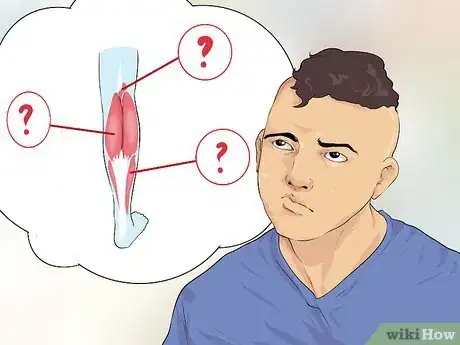
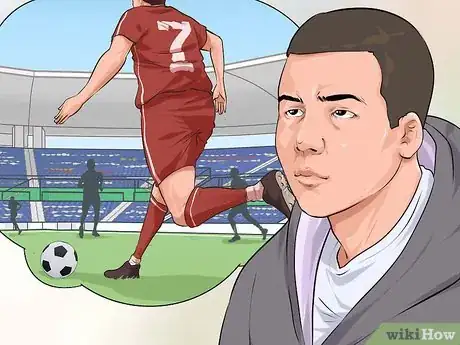
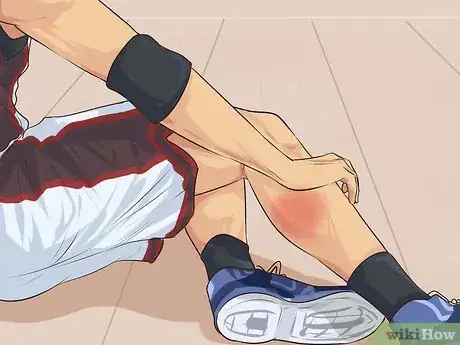
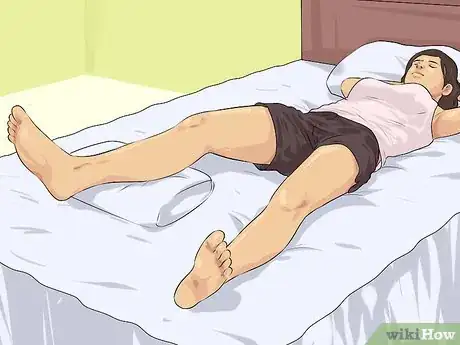
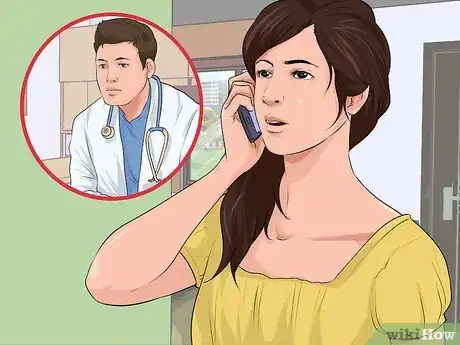
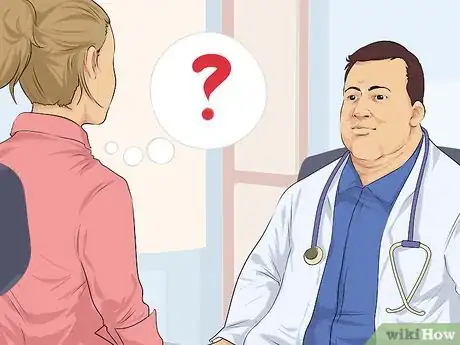
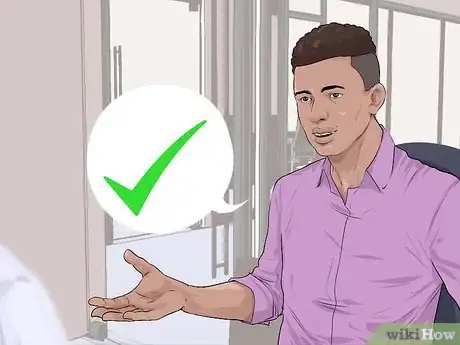
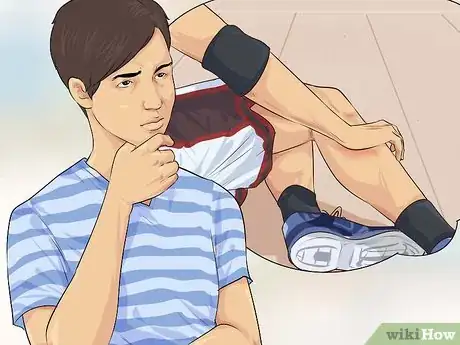
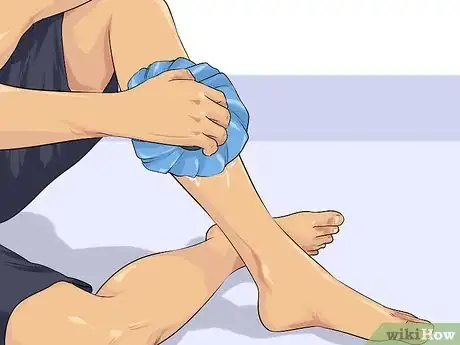

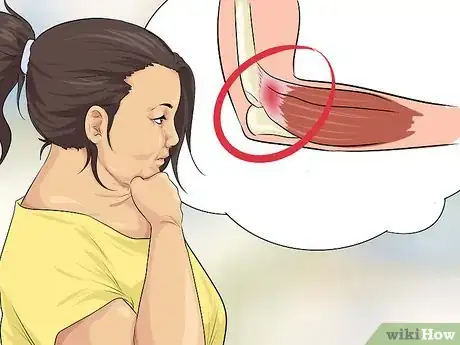
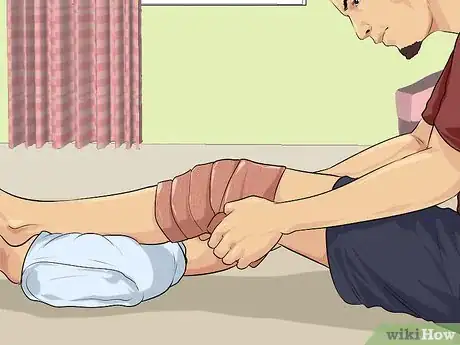
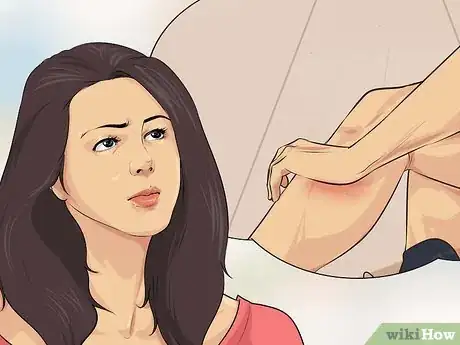
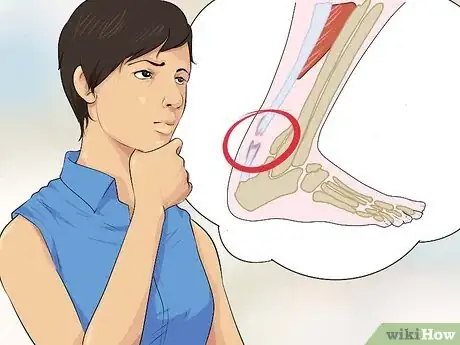
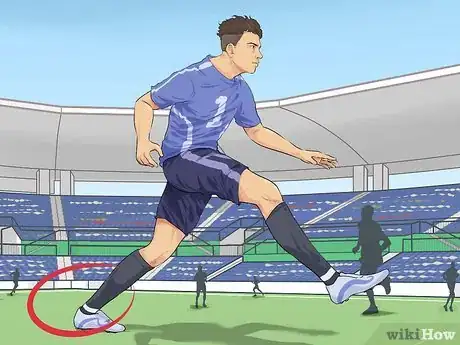
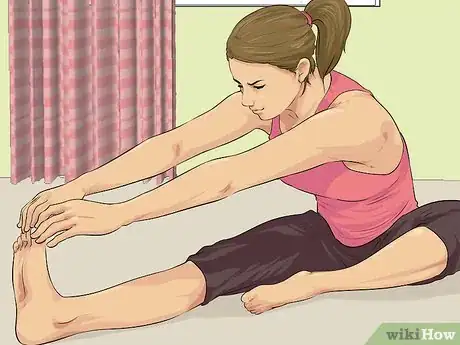
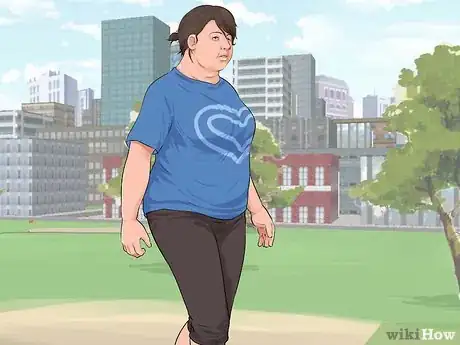
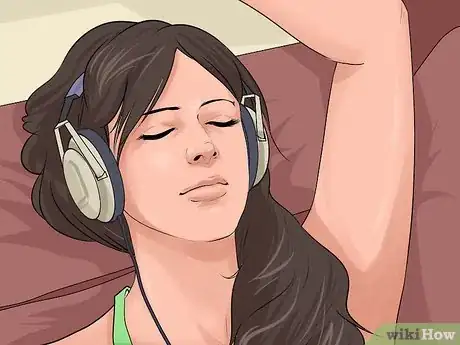
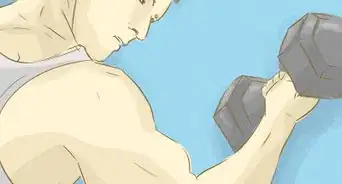
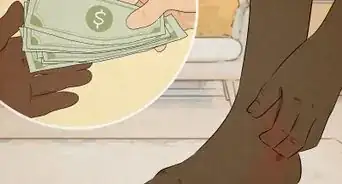
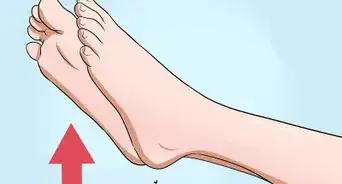
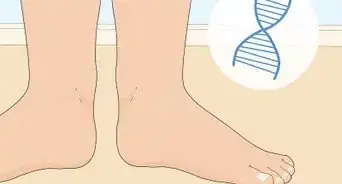

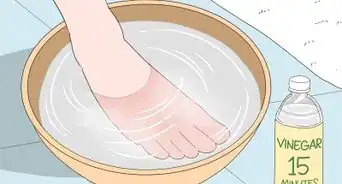
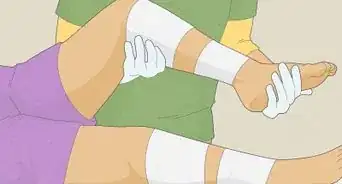
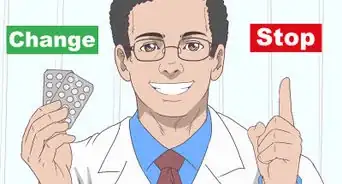
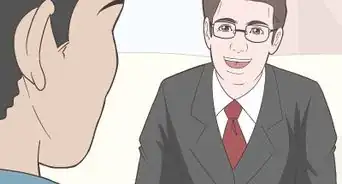
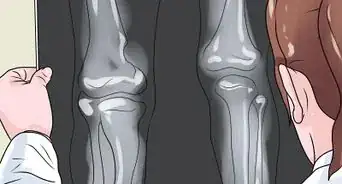
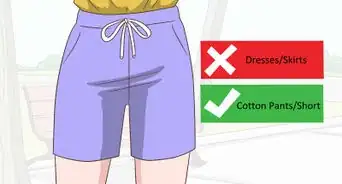
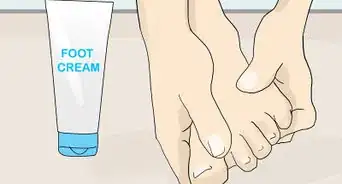
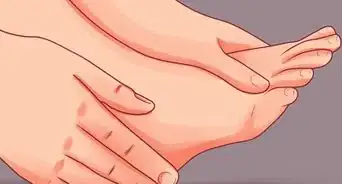









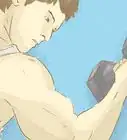
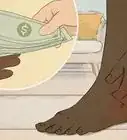

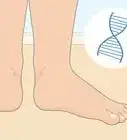



































Medical Disclaimer
The content of this article is not intended to be a substitute for professional medical advice, examination, diagnosis, or treatment. You should always contact your doctor or other qualified healthcare professional before starting, changing, or stopping any kind of health treatment.
Read More...